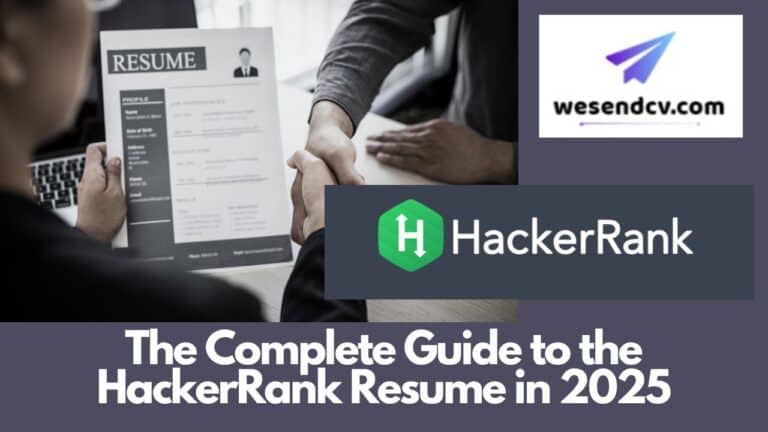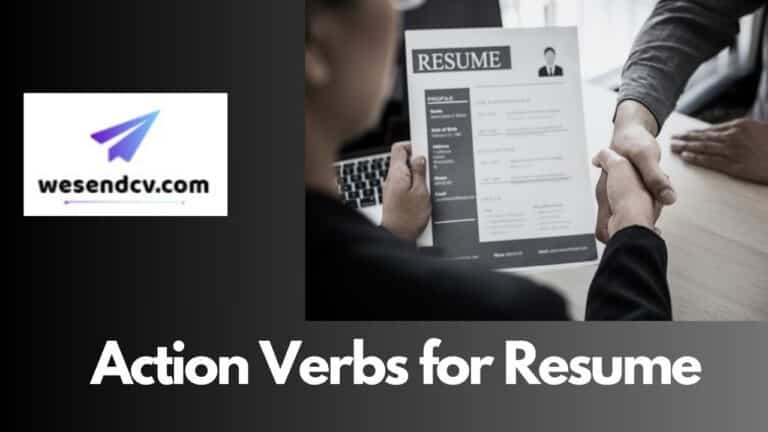One question that pops up regularly for job seekers is: How often should I update my resume to stay competitive in the job market?
In 2025, with the evolving landscape of work, technology, and the way companies hire, the frequency with which you update your resume can make or break your job search.
Let’s explore why keeping your resume fresh matters and how often you should tweak it to stay ahead of the curve.
Main Highlights of Content
ToggleWhy Is Regularly Updating Your Resume Important?
Your resume is your personal marketing tool. It’s how you present yourself to potential employers, showcasing your skills, experience, and accomplishments. If it’s outdated, it doesn’t reflect your current abilities or the latest industry demands.
In 2025, employers expect resumes that are sharp, relevant, and up-to-date with both skills and technology.
Here are some reasons why regularly updating your resume is crucial:
- Staying Competitive: Job markets are constantly changing, and so are the skills that employers seek. If your resume is old, it might miss out on showcasing the most in-demand skills or trends like remote work experience or AI literacy.
- Evolving Skills: You’re gaining new experiences, certifications, and skills all the time. If you don’t update your resume regularly, you’re not presenting the best version of yourself.
- Job-Specific Applications: Tailoring your resume to each job application increases your chances of standing out. A resume you sent six months ago might not be relevant for the job you’re applying for today.
How Often Should You Update Your Resume?
The truth is, there’s no one-size-fits-all answer. But, depending on your situation, there are a few general guidelines to follow.
1. After Every Major Accomplishment
If you’ve just completed a major project, earned a certification, or gained a new skill, that’s a perfect time to update your resume. These key achievements can boost your appeal to recruiters and employers.
Example: Let’s say you’ve recently led a project that saved your company $50,000. You don’t want to wait until your next job search to add that. Include it on your resume right away under your latest role.
2. Before Applying for a New Job
Any time you apply for a new position, you should review and update your resume. Tailor it to the specific job description by highlighting the most relevant experience and skills. Customizing your resume gives you a better shot at getting noticed.
- Use a tool like Resume and Cover Letter Customization Checker to ensure your resume is job-specific.
3. Every 6-12 Months
Even if you’re not actively job hunting, it’s a good idea to review your resume at least every 6 to 12 months. This ensures you’re not scrambling to remember details of projects or achievements when you need to apply for a job. It also keeps your document up-to-date with industry trends.
4. After Learning a New Skill
Learning doesn’t stop, and neither should the updates to your resume. Whether it’s mastering a new software, learning a new coding language, or even taking on management responsibilities, make sure to reflect those skills on your resume.
Example: Suppose you’ve taken a course on cloud computing. This skill is in high demand in 2025, so adding it right away will increase your chances of being shortlisted.
5. When Your Career Goals Change
Sometimes, your career path takes a turn, whether it’s transitioning to a new field or stepping into leadership roles. When this happens, revisit your resume to highlight the skills and experience that align with your new goals.
Example: If you’re shifting from a technical role to management, emphasize leadership and strategic decision-making in your resume.
What Sections of Your Resume Should You Update?
When updating your resume, you don’t necessarily have to change every single part. Here are key sections to focus on:
1. Skills
The most in-demand skills change regularly. In 2025, AI literacy, digital marketing, remote work proficiency, and cybersecurity skills are on the rise. Always check job postings in your field to ensure your resume highlights the skills employers are actively seeking.
Tip: Use tools like the Resume Skills Generator to identify trending skills relevant to your profession.
2. Work Experience
Keep your job history current by adding your latest roles and accomplishments. Focus on metrics and specific results that show the impact you’ve had in your positions.
Tip: Instead of simply stating your responsibilities, quantify your achievements: “Increased sales by 25% over 6 months,” or “Reduced operating costs by 15%.”
3. Certifications and Education
If you’ve completed any new certifications or coursework, make sure they are reflected in your resume. This section helps establish you as an expert and demonstrates your commitment to professional development.
4. Summary/Objective
Your career summary or objective should evolve with your career goals. If you’re moving into a new field or aiming for higher-level roles, make sure your summary reflects your new direction.
The Role of Technology in Resume Updates
Artificial Intelligence (AI) and ATS Optimization
In 2025, optimizing your resume for AI and Applicant Tracking Systems (ATS) is essential. Many companies use these systems to screen resumes before a human even looks at them.
- Ensure your resume contains relevant keywords from the job description.
- Avoid overly creative formats that can confuse ATS software.
- Make sure your resume is easy to scan with clear headings and bullet points.
Tip: Use the Resume Keyword Optimizer for ATS to ensure your resume is optimized for today’s technology-driven hiring processes.
Common Mistakes to Avoid When Updating Your Resume
Updating your resume is essential, but it’s also important to avoid common mistakes that could hurt your chances of getting hired.
1. Overloading with Irrelevant Information
Don’t add every single task you’ve ever done at your previous jobs. Focus on the responsibilities and achievements that are most relevant to the position you’re applying for.
2. Overcomplicating the Format
While you want your resume to stand out, don’t sacrifice readability for design. Keep your format simple, especially since most resumes are first screened by ATS software.
3. Failing to Include Action-Oriented Language
Use strong, action-oriented words to describe your experience. For instance, “Led a team of 5 developers” is better than “Was responsible for leading a team.”
4. Not Proofreading Thoroughly
A resume with typos or grammatical errors sends the wrong message to recruiters. It shows a lack of attention to detail and professionalism.
Tip: Run your resume through a Free Resume Spell and Grammar Checker to catch any mistakes.
FAQs
Q: How can I know if my resume needs updating? A: If it has been more than six months since you last updated your resume, or if you’ve gained new skills or accomplishments, it’s time to review and refresh it.
Q: Should I update my resume if I’m not actively job hunting? A: Yes! Keeping your resume current ensures you’re always ready to seize new opportunities and avoids scrambling to remember key details when you do decide to apply for jobs.
Q: What’s the biggest mistake people make when updating their resumes? A: The most common mistake is not tailoring the resume to the specific job you’re applying for. Always customize your resume by aligning your skills and experience with the job description.
Q: Do I need to change my resume format often? A: Only if your resume format is outdated or difficult to read. Stick to clear headings, bullet points, and easy-to-read fonts. If you’re unsure, try the Resume Formatting Tool for guidance.
Final Thoughts
Your resume is a living document that should evolve alongside your career. Whether you’re actively job hunting or just staying prepared, updating your resume regularly keeps you competitive in an ever-changing job market.
Make sure to review your resume after every major milestone, tailor it to each job you apply for, and leverage modern tools to optimize it for ATS systems.
Looking to fine-tune your resume for 2025? Start with a Free Resume Tools to ensure it’s ready for the job market ahead.







